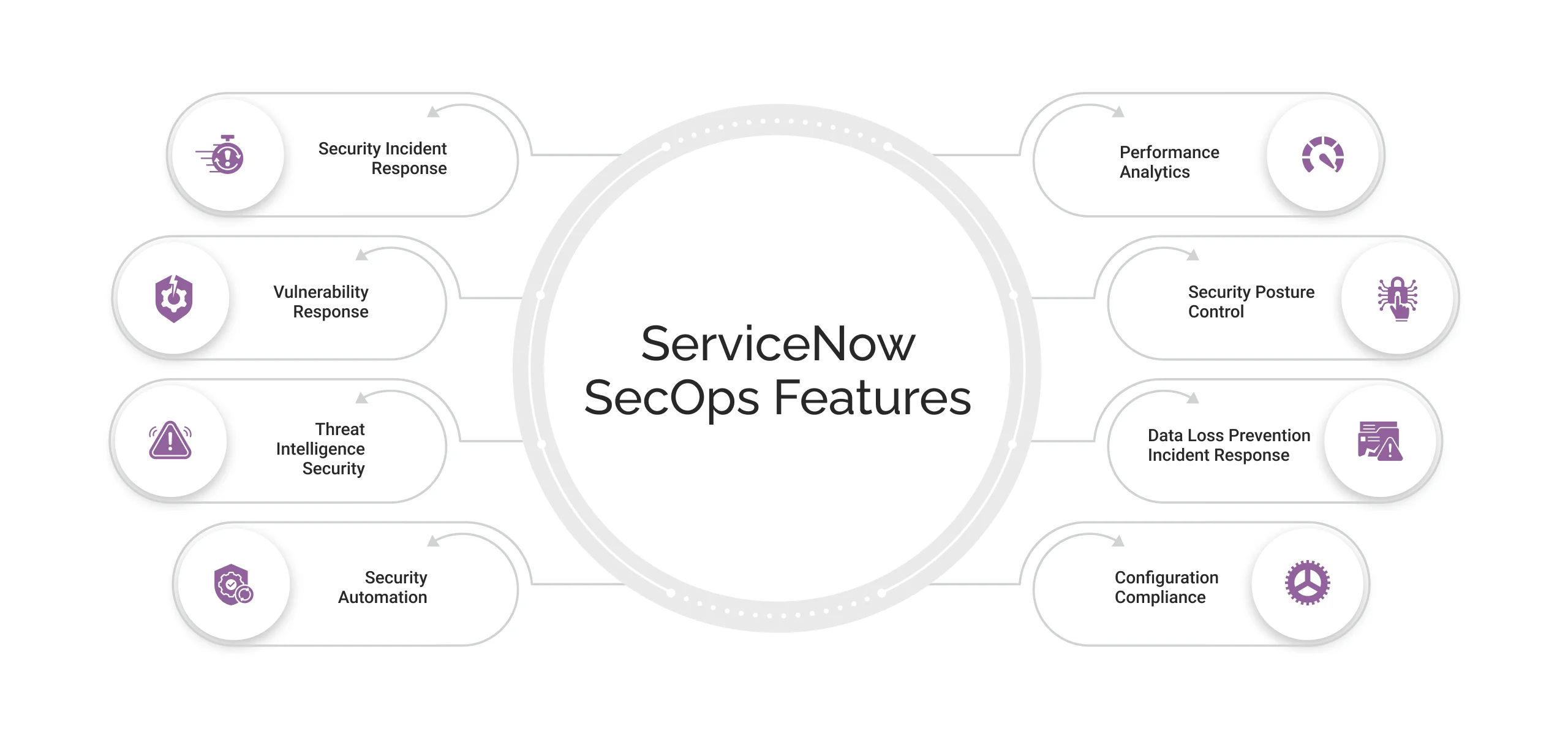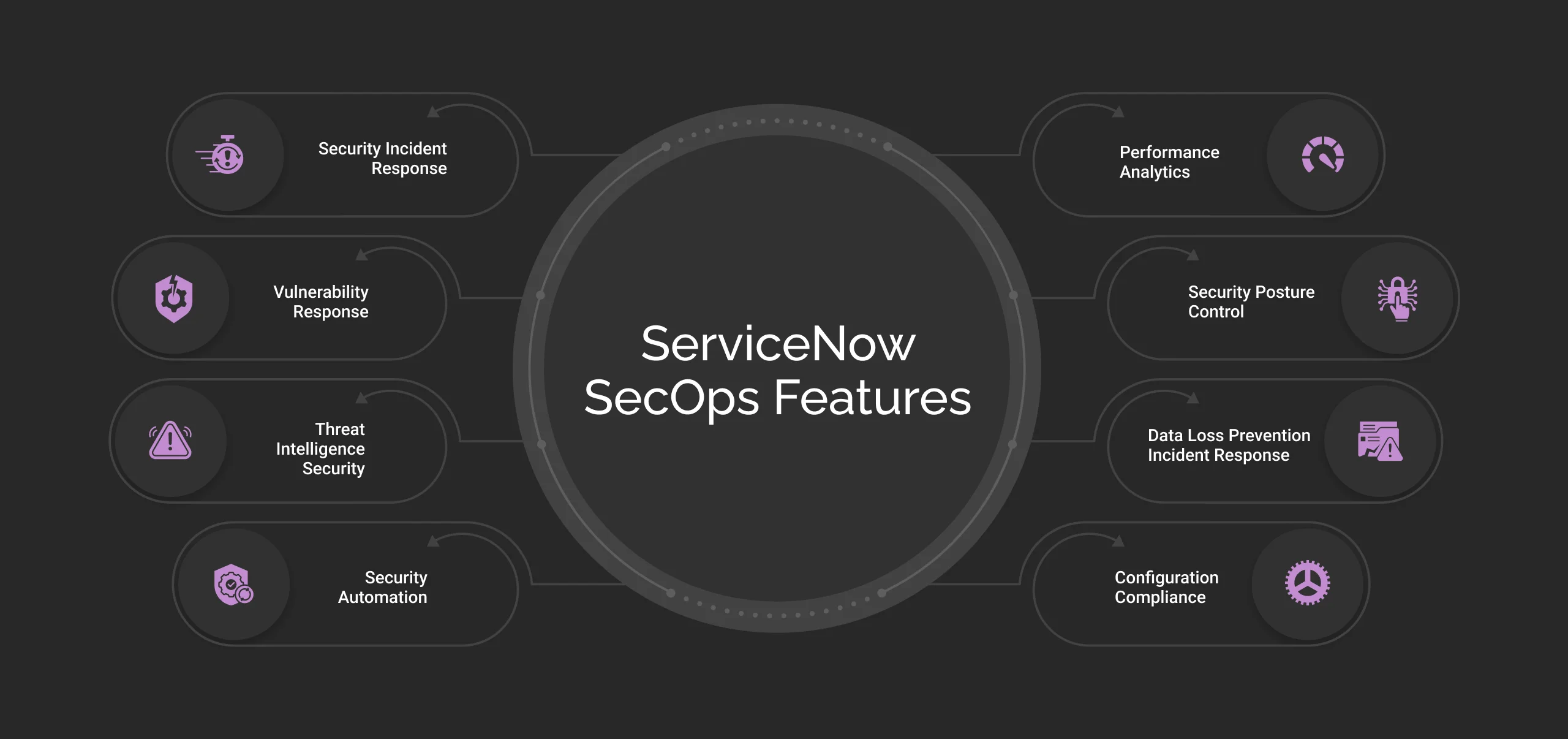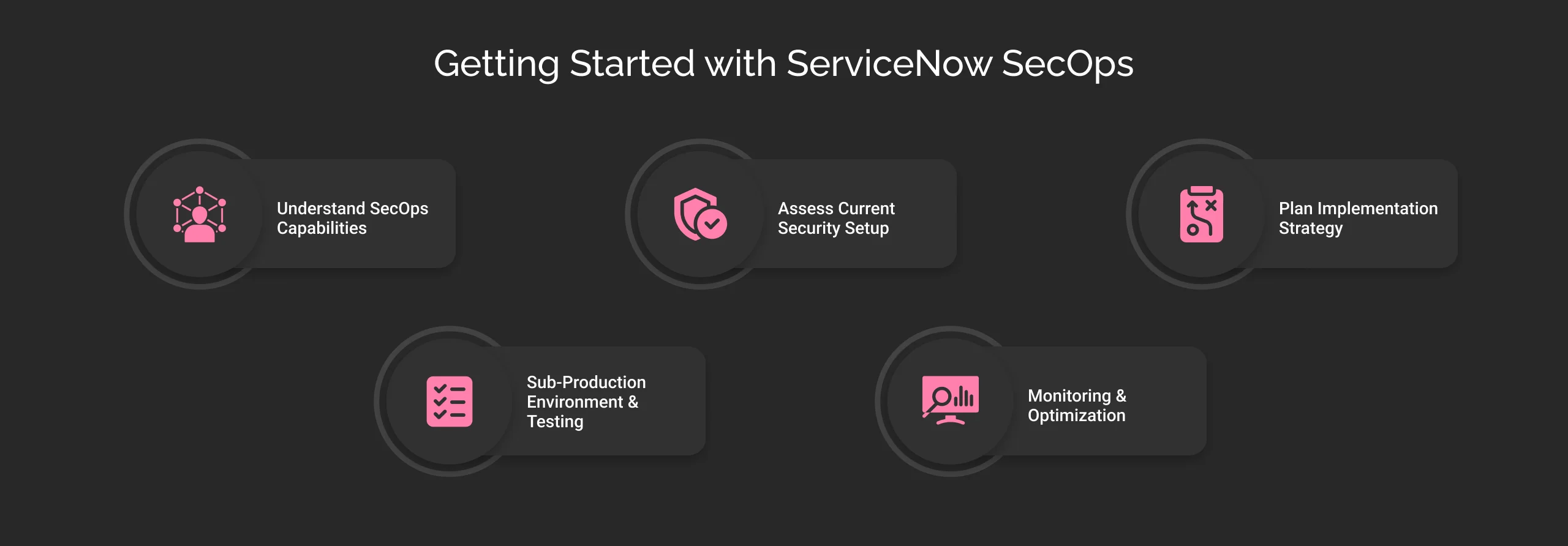ServiceNow Security Operations (SecOps): A Complete Guide
Table of Contents
When your security and IT teams operate in silos, threats don’t just go unnoticed, they go unresolved. You know what happens next, breaches. That’s how companies lose customer trust, end up facing lawsuits, and tarnish their integrity and market reputation.
ServiceNow Security Operations (SecOps) bridges this disconnect. Built on the ServiceNow AI Platform, it empowers organizations to detect, prioritize, and respond to threats with proper measures by aligning security workflows with IT operations in real time.
In the times when each second counts, SecOps safeguards the organization from security threats, ensuring complete control and visibility of security measures.
Let’s take a closer look at how ServiceNow Security Operations can serve as a protective shield for your organization. So, without further ado, let’s begin!
Understanding ServiceNow Security Operations Core
ServiceNow SecOps is a comprehensive suite of applications within the ServiceNow that mainly integrates an organization’s security operations with IT operations. The core of SecOps is based on the Security Orchestration, Automation, and Response (SOAR) principle. It connects disparate tools and data into orchestrated, automated workflows that:
- Manage security incidents from detection to resolution
- Identify and remediate vulnerabilities
- Integrate threat intelligence feeds
- Enable real-time collaboration between teams
ServiceNow SecOps categorization & Components
While the Security Operations applications are designed to streamline security workflows, these applications fall into two broad categories:
Attack surface management
This category focuses on identifying and mitigating vulnerabilities before they can do further harm. It is like a proactive safeguarding approach that alarms before the wrong is done. It includes:
- Threat intelligence integration
- Vulnerability management
- Continuous monitoring: Tracks security posture in real time to detect potential risks before they escalate.
Enterprise security case management
This category ensures rapid response to security incidents, minimizing damage and downtime. It is the quick action that is implemented once the deed has been done, like implementing a disaster recovery plan. It includes:
- Security incident response
- Major security incident management for handling high-impact security events.
- Automated remediation: Uses AI-driven tools to accelerate response times and reduce manual workload.
Many organizations struggle with alert delays and fragmented responses, leading to a frustratingly slow Mean Time to Detect (MTTD) and Mean Time to Resolve (MTTR) incidents. SecOps emerges as a vital solution to these challenges by automating repetitive tasks, which not only streamlines operations but also allows security teams to focus on more critical issues.
Key components that make SecOps effective:
Automation led by AI:
The integrated AI processes and AI agents accelerate issue resolution, provide predictive insights, and proactively strengthen security. They do so by analyzing the historical data to identify patterns of potential threats and automating repetitive tasks, such as incident triage. This allows teams to resolve issues faster and focus on prevention. Furthermore, features like Now Assist help security teams anticipate threats instead of just reacting to them.
Workflow-centric design and data fabric:
The workflow-centric design streamlines security tasks through predefined workflows, while the data fabric aggregates real-time information from various sources. This integration ensures that teams can access critical data quickly, enhancing decision-making and response times. This ensures security teams always have the most up-to-date information, eliminating blind spots.
ServiceNow SecOps Key Features and Modules
At the core of SecOps are several powerful modules and features that work together seamlessly.


- Security incident response (SIR): This enables organizations to manage the entire lifecycle of security incidents from detection to resolution. This works by extracting data from various sources like threat intelligence feeds, security logs, and sensors. It also offers pre-built workflows that make responding to security threats faster and more effective.
- Vulnerability response (VR): VR helps businesses identify, prioritize, and categorize vulnerabilities before they can escalate beyond the desired limits. It can correlate data from vulnerability scanners by leveraging the CMDB (Configuration Management Database); as a result, the remediation workflows, like patching or changes in configurations, can take place. It ensures that the most critically affected assets are addressed immediately. Its ultimate focus is to minimize the vulnerability impact for the business.
- Threat intelligence security: For organizations focused on threat intelligence, it offers advanced capabilities for discovering Indicators of Compromise (IoCs) that are recurring in nature and also enables sharing of threat data with industry peers and the ServiceNow community. It integrates smoothly with SIEM systems (Security Information Event Management), EDR tools (Endpoint Detection and Response), and firewalls, making security investigations more effective.
- Security automation: This is at the heart of SecOps, thanks to Security Orchestration, Automation, and Response (SOAR) capabilities. SOAR works across all SecOps modules to automate repetitive security tasks, orchestrate workflows, and optimize incident response, allowing security teams to focus on what truly matters instead of getting overwhelmed by manual processes.
- Performance analytics: SecOps provides real-time analytics with predefined KPIs, reports, and interactive dashboards for monitoring security operations performance. It helps track metrics like MTTD (Mean Time To Detect) and MTTR (Mean Time To Resolve), identifying areas for improvement.
- Security posture control: Security posture control provides organizations with complete visibility into their security assets, helping identify gaps and vulnerabilities before they become threats. This feature provides organizations with more clarity as to which organizational assets are protected and which ones are at high risk.
- Data loss prevention incident response: For businesses handling sensitive information, this feature plays a critical role in detecting and preventing data leaks, ensuring compliance, and protecting customer trust.
- Configuration and compliance: This security operation feature identifies and lists down all assets that are not configured according to security or corporate policies. This facilitates prioritizing remediation based on business impact using the CMDB. Further, it also automates policy checks by importing data from configuration, scanning applications, and generating reports for audits.
How to Get Started with ServiceNow SecOps?
Here’s a step-by-step guide to getting started with ServiceNow SecOps:


- Understand SecOps capabilities: Before implementation, familiarize yourself with Security Incident Response (SIR) and Vulnerability Response (VR). These modules help streamline security operations by integrating threat intelligence and automation. You can get in touch with a ServiceNow SecOps Consulting Services provider to avail the proper licenses and quote the pricing.
- Assess your current security setup: Evaluate your existing security tools, workflows, and vulnerabilities. Identify gaps where you believe SecOps can enhance efficiency and response times.
- Plan your implementation strategy: Define objectives, key stakeholders, and integration requirements. Consider getting in touch with a certified partner for understanding your customization needs, workspace configuration requirements, and feature support to ensure a smooth transition.
- Sub-production environment and testing: Before deploying SecOps in production, activate it in a sub-production instance for testing, like sandboxes. Perform upgrade and regression testing to minimize disruptions and ensure the functionalities and customizations are working properly. Ensure real-time threat detection and remediation capabilities are optimized.
- Monitor and optimize: Continuously track security incidents with the help of KPIs and other relevant metrics. Make sure to analyze response times and, based on the results, refine workflows to enhance the organization’s cyber resilience.
Best practices
Train your security teams: Provide structured training on functionalities, and give them access to the right reference material to ensure seamless adoption. You can also request your service provider for knowledge transfer or recorded video sessions for the team’s better understanding.
Ensure collaboration between teams: The IT department and security teams need to work in harmony, as their collaboration can lead to success. If there is discord between them, it can result in delays and complications. For example, security teams should conduct vulnerability assessments and resolutions in sync with the IT developers, rather than waiting until after deployment is done.


Conclusion
ServiceNow SecOps not only enables organizations to enhance their security operations and automate threat detection. But it also speeds up incident response and provides proactive protection against cyber threats. However, without proper guidance, your implementation journey can be full of hassles.
With Cyntexa’s specialized expertise in ServiceNow consulting and implementation, businesses can improve their security and streamline their operations. Our customized solutions leverage AI-driven automation to create a resilient, future-ready security framework that adapts to evolving cyber risks.
Want to know more about your business’s possibility to become more resilient to cyberattacks? Get in touch with our experts today!
Don’t Worry, We Got You Covered!
Get The Expert curated eGuide straight to your inbox and get going with the Salesforce Excellence.
AUTHOR
Shruti
ServiceNow, Sales Cloud
Shruti is a ServiceNow Consultant with 5+ years of experience across ServiceNow ITSM, AWS, Salesforce Loyalty Management, and managed services. She blends technical expertise with strategic insights to deliver transformative IT services and CRM solutions that enhance efficiency and customer satisfaction.


Cyntexa.
Join Our Newsletter. Get Your Daily Dose Of Search Know-How








